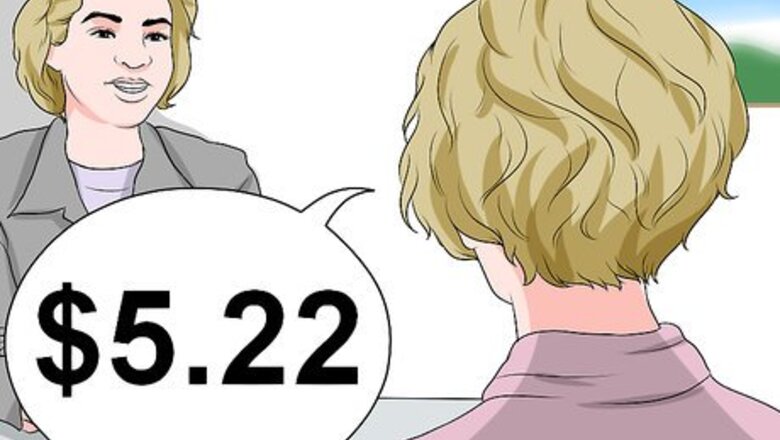
views
Counting Out Basic Change
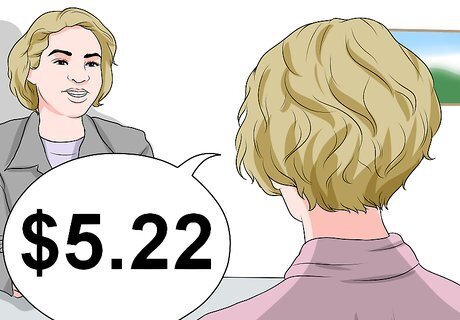
State aloud the purchase price. If you work as a cashier or with a cash register, you should always state the purchase price aloud to the customer and then state the amount of money that they handed you. Let's say the purchase price is $5.22, and the buyer hands you a ten-dollar bill. You would say, $5.22 out of $10. This will help both you and the customer remember the purchase price and amount of money given. You can then begin to calculate the amount of change in your mind.

Place the money on the register or counter. You should never put the cash directly into the till in case you forget the exact amount they gave you. Instead, keep the money on the counter so that you can see the exact amount of money given as well as the total price. These are the two numbers you will need in order to calculate the amount of change owed to the customer. By keeping the cash visible, you can refer back to it if necessary. For example, the customer may think they gave you a $20 instead of a $10. By keeping the amount they paid out of the till until the end of the transaction, you can avoid this sort of confusion.

Count out change based on what the cash register has calculated. If you are working with a cash register, then you can usually rely on the cash register to do the calculations for you. For example, if the cost of an item is $5.23 and the customer pays $10, you should enter the amount paid as $10 and the cash register will provide the amount that you owe the customer. In this case, the customer is owed $4.77. Count out $4.77 from the till, beginning with bills and moving to coins. Make sure that you familiarize yourself with the cash register that you are using so that you know how to properly cash out a customer. If you ever run into any errors while using a cash register, ask your manager or a colleague for help.

Determine change using mental math. If you do not have a cash register, or it is broken, or you entered an item incorrectly, you can always count out change using mental math. This is an excellent skill to have and is essential if you are working as a cashier. A good method is to count out change from the purchase price and stop when you get to the amount paid. Begin with the smallest coins and work your way up. For example, if the the price of an item is $12.48 and the customer gave $20, here is how to count out the change: Count out the pennies starting at $12.48: $12.49...$12.50 (2 pennies) Count out quarters starting at $12.50: $12.75...$13.00 (2 quarters) Count out dollar bills starting at $13.00: $14.00...$15.00 (2 dollars) Count out five dollar bills starting at $15.00: $20.00 (1 five dollar bill) Total change owed is $7.52
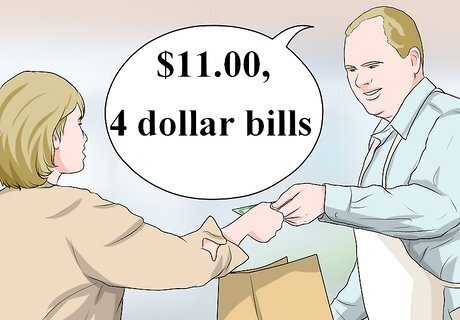
Count change aloud to the customer. Once you have determined the correct amount of change, you should count the change aloud as you give it to the customer. This way, they will know that you are giving them the correct amount of change. This can be done in the exact same way as the above step, but this time, you are saying it out loud as you hand it to the customer. For example, if the price of an item was $10.25 and the customer gave $20.00, give them the change while counting out loud. Hand them 3 quarters and say $11.00, 4 dollar bills and say $15.00, and 1 five dollar bill and say $20.00. This way they can see that you have provided them with the correct amount of change.
Performing More Complex Calculations

Pay attention to more complex amounts. Sometimes a customer will pay with an odd amount (typically more than necessary) because they want to avoid receiving too many small coins. For example, if the price of an item is $33.02, your customer may give $50.02 as payment. In this instance, you can put the two pennies in the register and count up from $33.00. Proceed to count the change as follows: $34.00…$35.00 (2 dollar bills), $40.00 (1 five dollar bill), $50 (1 ten dollar bill). This makes the total amount of change $17.00.

Give back the fewest number of coins. Sometimes, depending on the amount owed, you may find that you are giving back multiple nickels and dimes instead of a quarter. Once you have determined the correct amount of change by counting up from the price to the amount paid, make sure that you look over the change and give the customer back the fewest coins possible. For example, if the price was $5.55 and the customer paid with a $10 dollar bill, you would count up starting with nickels. $5.60 (1 nickel), $5.70...$5.80…$5.90…$6.00 (4 dimes), $7.00…$8.00…$9.00...$10.00 (4 dollars). The total amount of change is $4.45. Instead of giving back 1 nickel and 4 dimes to make .45 cents, you could give the customer 1 quarter and 2 dimes, which also makes .45 cents. This is preferred because you are giving the customer fewer coins.
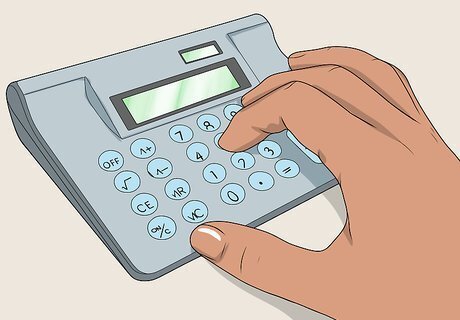
Check your math using a calculator. Always have a calculator handy so that you can double check your math before giving change to a customer. This will give you peace of mind and confirm that your mental math was correct. It is possible that you may have made an error and the calculator will help catch that. This is especially important if you are working with complex calculations. You can also use the calculator on your phone to help double check that you provided the customer with the correct amount of change.
Ensuring You Receive Proper Change
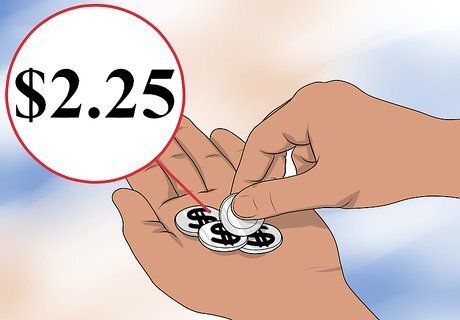
Count your change before leaving the store. You should always count out the change you receive after every purchase to ensure that you have been given the correct amount. It is easy for cashiers to make a mistake (i.e. mistaking a $20 bill for a $10 bill) resulting in less change than you are owed. In order to make sure that you are given the proper amount of change, you should always look over the change and make sure it matches the amount you paid. Count up from the price to the amount paid to determine the correct amount you are owed in change. For example, if an item cost $2.75 and you gave $5.00, you should count out the change starting with $2.75. Count out 1 quarter to make $3.00, and then $2.00 to get to $5.00. The total change, therefore, should be $2.25. Use the calculator on your phone if you are in a rush or do not feel comfortable performing mental math.
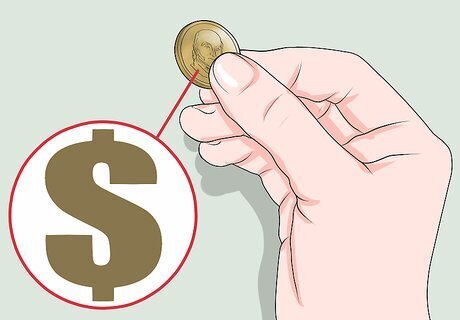
Check that you are given change in the correct currency. Depending on where you live, you may notice that you have received a few coins in a different currency. You should always make sure that the currency you receive as change is the same as the currency you initially paid with. For example, in Canada you will often receive U.S. coins as change. Although at times Canadian and U.S. currency will be at par, it is often slightly different. You should get in the habit of checking to ensure you receive the proper currency.

Make sure you leave the store with the same amount as you paid. A simple way to think about receiving change is to realize that the you should leave with the same amount as you gave, but some should be in the form of change and the rest should be in the product or service that you purchased. For example, if you bought a doll that cost $25 and you gave $40, you would exit the store with $15 worth of change and $25 worth of doll. When added together, that equals $40, the total amount you originally paid.



















Comments
0 comment